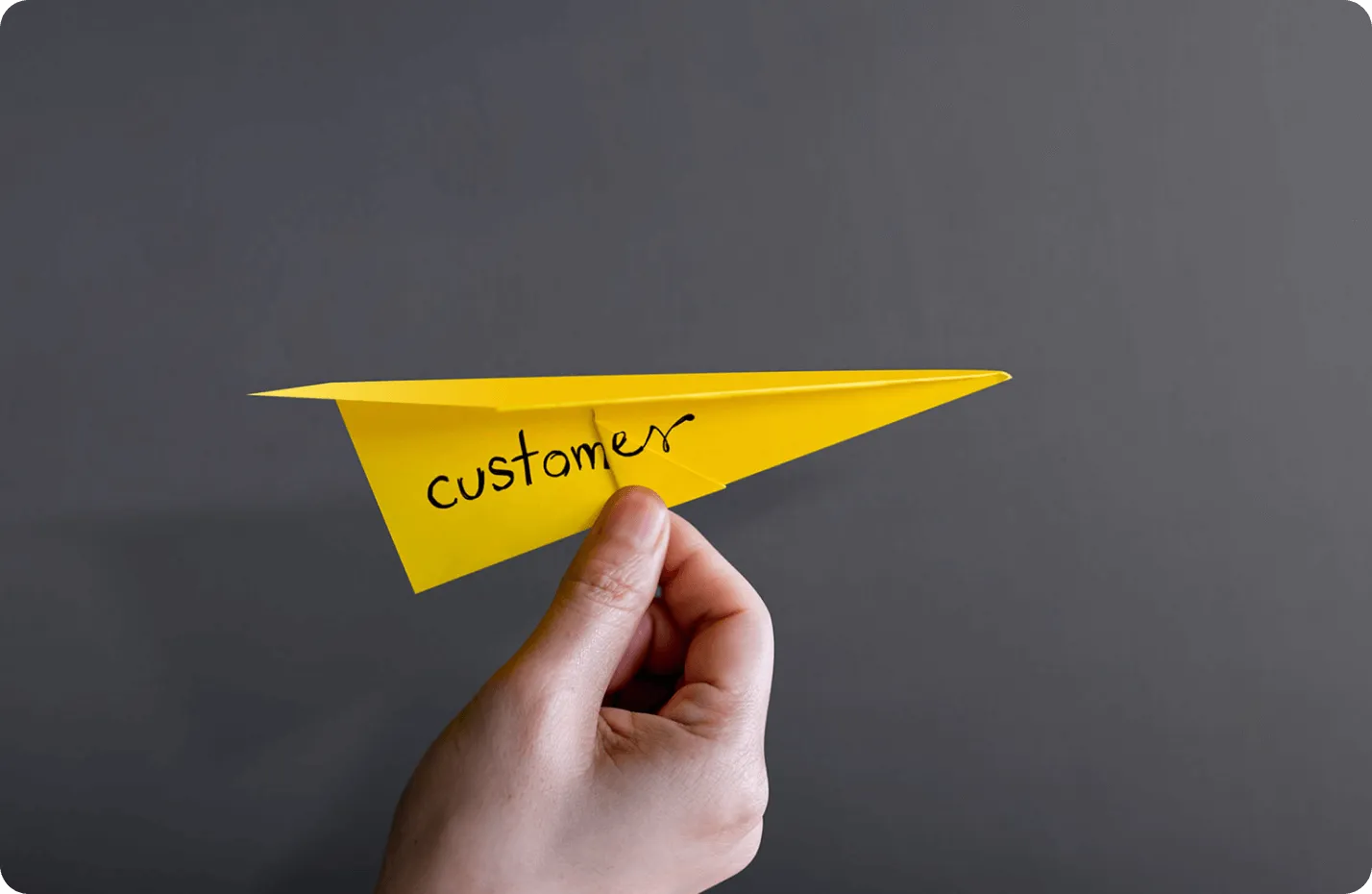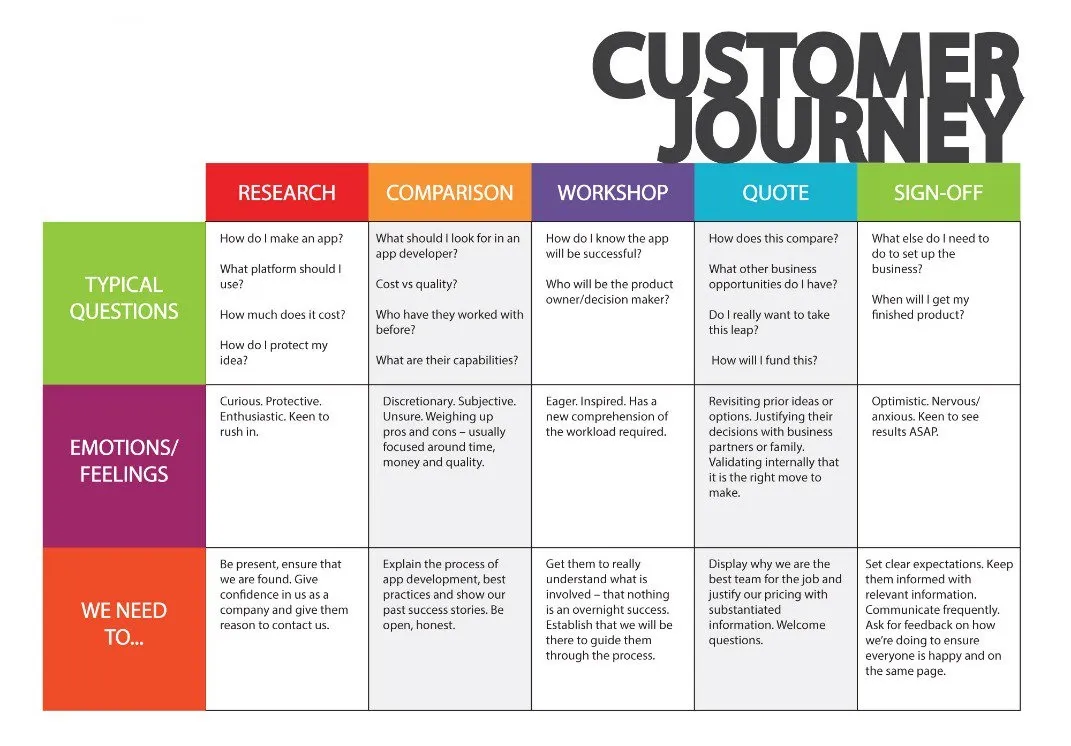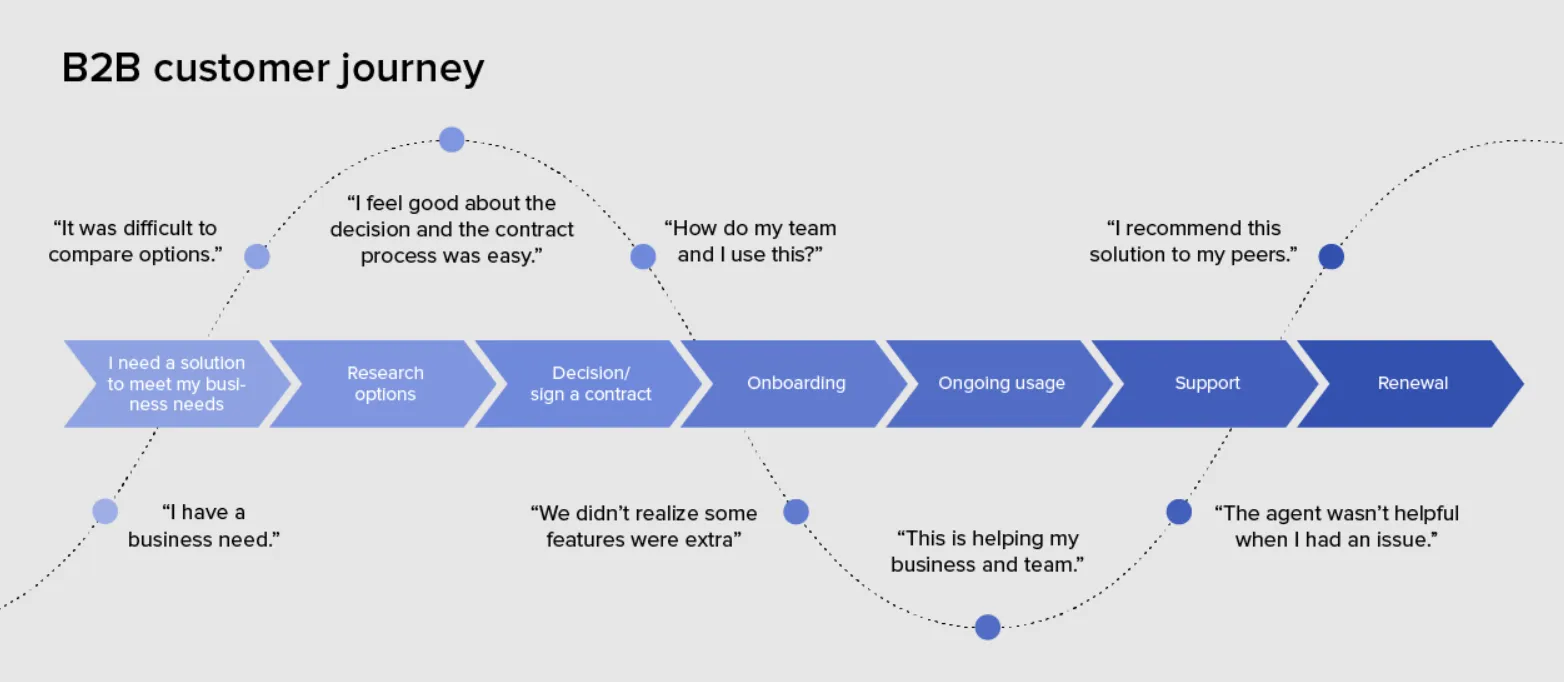
If earlier, before the advent of digital technologies, it seemed that it was enough to advertise your product to potential clients directly, and they would immediately turn into buyers. But with excessive online channels, where they can learn about alternative products and choose the right offers quicker, brands no longer control the entire flow of information the clients receive to make their final decision. This means a more intricate customer journey or user path. What’s that?
What is a customer journey?
What is a customer journey? The customer journey or client path is the path that a client goes through: from the emergence of a need for a product or service to the moment of purchase or becoming a fan of the brand. In customer journey marketing it’s often reflected in a customer journey map.
Why is customer journey mapping important?
Over time, marketers have come to the conclusion that there is another way to fight competitors, in addition to price or quality. And that’s customer journey mapping. You need to find out how the clients live before and after the purchase, and then use this knowledge to keep them.
Customer journey mapping is important because it is a way to a strategic approach for a better understanding of customer expectations. Customer journey mapping is crucial for optimizing that customer experience. Client journey is just as important for small and medium-sized enterprises as it is for larger corporations.
The Customer Journey Mapping Process
How to create a customer journey map? This is the most often a really full-fledged map of the customer journey, and quite confusing. A customer can learn about a brand through word of mouth, google it, go to the store to feel the product, etc. But in the end, they order what they want online because it’s cheaper. So, everything is complicated.
What’s included in a customer journey map?
A journey map traditionally lays out every touch point which customers may go through the bran. It’s from how they come across the idea of using this or that product, hear about it through the grapevine, find it on social media or brand ads, to their direct interactions with your company product, website, brand customer service, sales or support team. It further includes all the actions your customer takes to complete an objective across the sales funnel. Before you create a journey map, consider its components.
Customer stages
To organise effective user journey marketing, one of the first steps of creating a practical customer journey map will be to define the stages in the customer journey as per your business goals and the funnel you have.
Buyer personas
After that user research, you may pass over to creating your buyer personas based on the user data from the path and their experience. A buyer persona will be an average composite representation of a market segment. When you point out it, you know your target audience better.
Customer touchpoints
Another part of your customer experience journey mapping is defining customer touchpoints. But what is a customer touchpoint?
A customer touch point is any direct or indirect contact a customer has with a brand. Customer touch points can occur within and outside of a brand’s control and may happen before, during or after the purchase of a brand’s product or service. (Techtarget)
Emotions
Finally, what is a customer journey map without your users’ feelings and emotions spotted? To be exact, you may include an emotional journey map which will be associated with the indication of various emotional statuses when users pass through each stage of their experience.
How to Create a Customer Journey Map
It’s worth starting with defining the portrait of the client (buyer personas) and describing its main parameters. After that, it is worth describing all the situations that are triggers for the emergence of a need. From any need, you can describe the whole range of tasks that our persona wants to solve. Next comes the stage of finding a solution, in which it is important to describe as fully as possible all the possible ways and actions that your customers will take.
Based on the work done you may create a mapping with all the team members on the project in about seven easy steps:
- Step 1: Create buyer personas.
- Step 2: Select your target customers.
- Step 3: Enlist customer touchpoints.
- Step 4: Identify their actions and emotions.
- Step5: Analyse your available resources.
- Step 6: Create a map of appropriate type.
- Step 7: Analyze the customer journey and find the insights.
You may come up with the different types of user journey to depict your customer success story and analyse the progress.
Types of Customer Journey Maps
Here you will basically find four major types of web customer journey. You can design them to understand various scenarios your customer may encounter in the purchasing story:
- Current state,
- Future state,
- Day in the Life,
- and Service Blueprint.
There is no need to chart all four of them, but it may be helpful to understand each of the types depending on your marketing goals.
Customer Journey Mapping Best Practices
Understanding the customer journey is a great way to improve your marketing and achieve business goals successfully, as well as analyze possible pros and cons of your flaws if any. Feel free to apply the best possible practices to pave that way.
- Focus on the customers, not your company.
- Divide, but don’t forget to conquer.
- Enlist multiple failure warnings.
- Refresh every 3-7 years.
- Focus gaps & pain points of real customers.
- Organize workshops, not just create reports.
Not just real actions, but emotions should be considered to achieve customer satisfaction. When you have a basic understanding of your product, you know who your target audience is and what channels of interaction you use (or plan to use) with it. Try to model every possible way that a persona needs your product. The deeper you dig into the prerequisites and triggers of the need, the better.
Benefits of Customer Journey Mapping
Structurally, customer journey meaning CJM allows you to conduct analytics on your market, study competitors, determine target indicators, find your weaknesses, get closer to your target audience, measure customer loyalty and optimal LTV, upgrade your product and team.
It is also a methodology that helps you understand the journey a user takes while interacting with your product: what they do like, what can help them, what annoys them, etc. Thanks to CJM, you may come up with new ideas for product development and significantly improve user satisfaction. Using this methodology in the case of a new product launch, will allow foreseeing problem areas and safeguarding so as not to get dramatically mistaken.
CJM can be used by different types of companies – both those for which a digital product generates additional revenue and app-based companies for which a digital product is the basis of their business. Also, this methodology can help at different stages of product existence.
Customer Journey Mapping Examples
Here you may discover the quality customer journey map examples created by various companies for different projects.
 Or it may be depicted in a form of a path the users go through during the funnel stages:
Or it may be depicted in a form of a path the users go through during the funnel stages:
 Also, you may create it with arrows to simplistically show the progress. Here’s a CJM for B2B:
Also, you may create it with arrows to simplistically show the progress. Here’s a CJM for B2B:
 How can I optimise my customer journey map?
How can I optimise my customer journey map?
To optimize your maps, you may apply the best practices, and examples, as well as use the tools for marketing success. Every time you organize your work in a complex, set clear objectives for the Highlight your target customer personas, and enlist touch points. Try to distinguish the elements you need your map to show you and include the resources you lack or have to satisfy all the process demands. Apply modern marketing optimization tools to speed up your work.
Conclusion
It is important to correctly understand the customer journey definition and how to use this method productively. We have a persona, the prerequisites for the emergence of a need (interest) in our product, an understanding: what action scenarios are there, what channels of interaction are available to you, your resources, and the expectations the client has, what emotions formed on each of stages, etc. Also, apply optimization tools that are important to track and better measure the effectiveness of your marketing success, as well as create objective user journeys in future.
